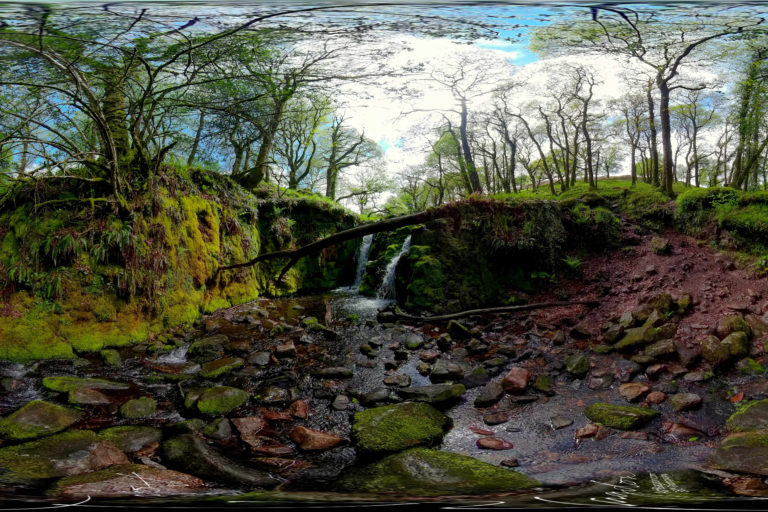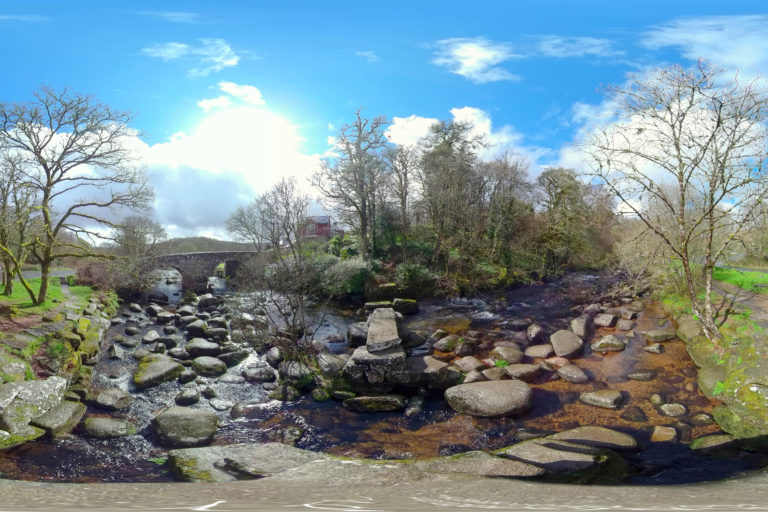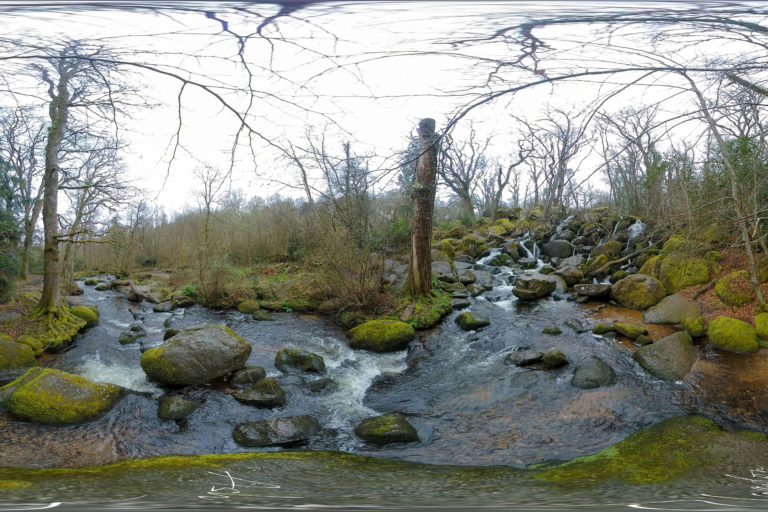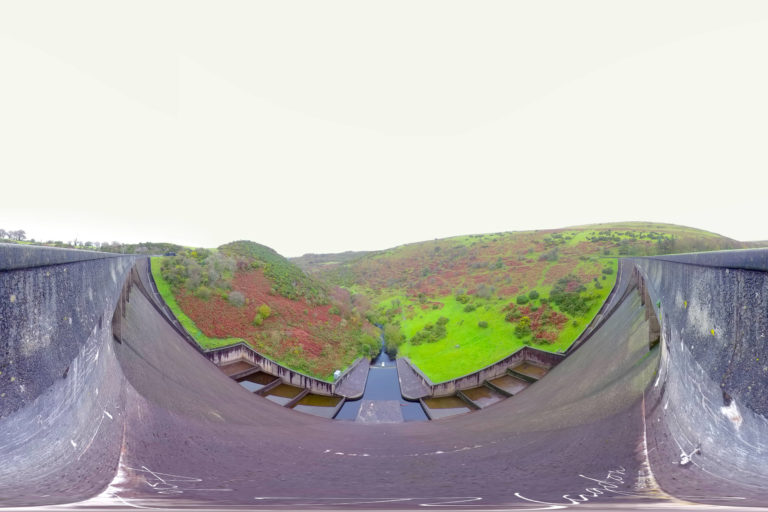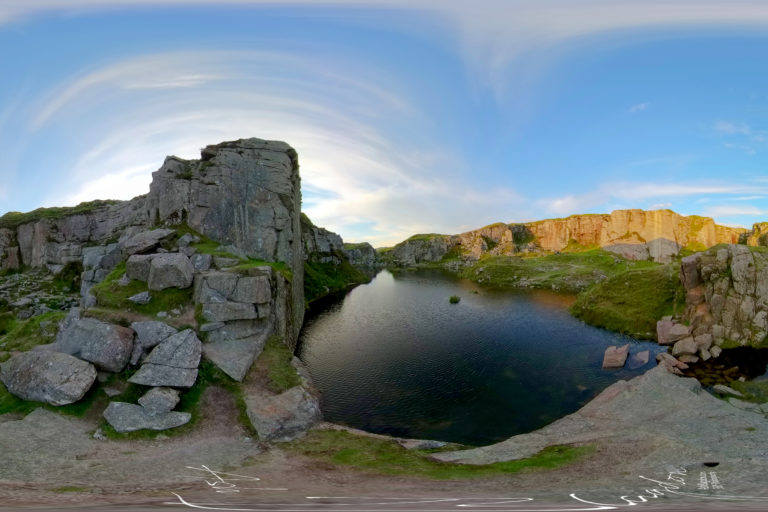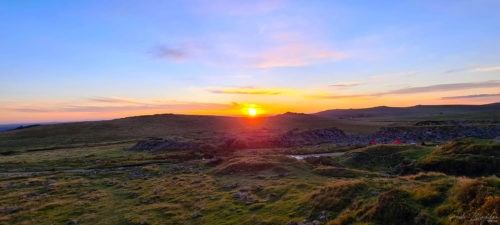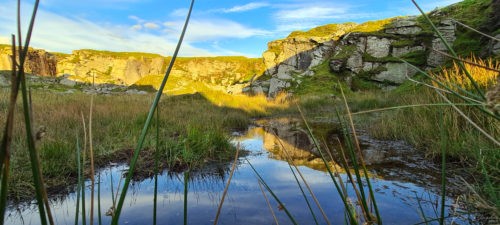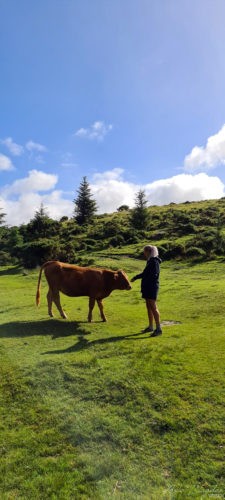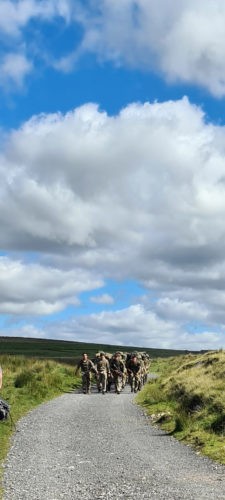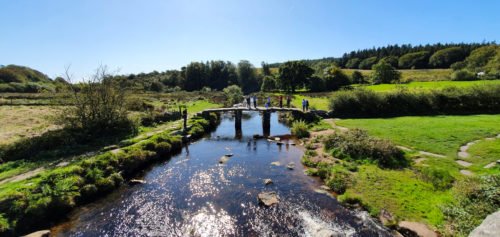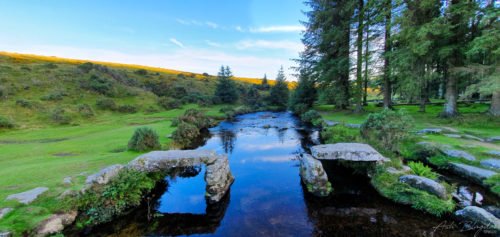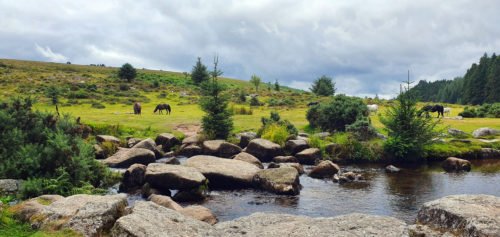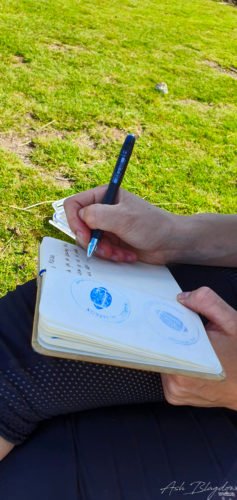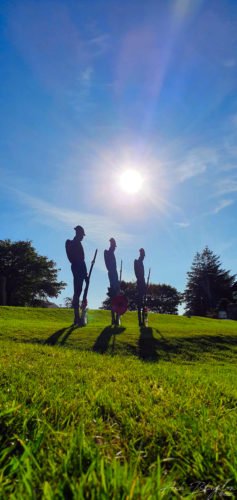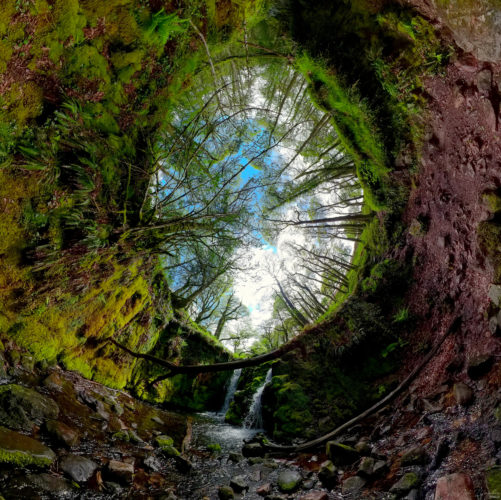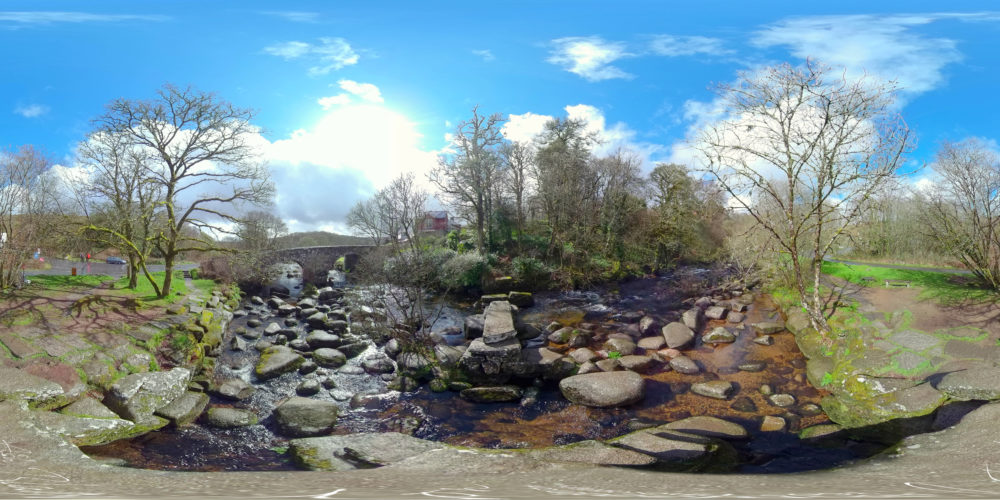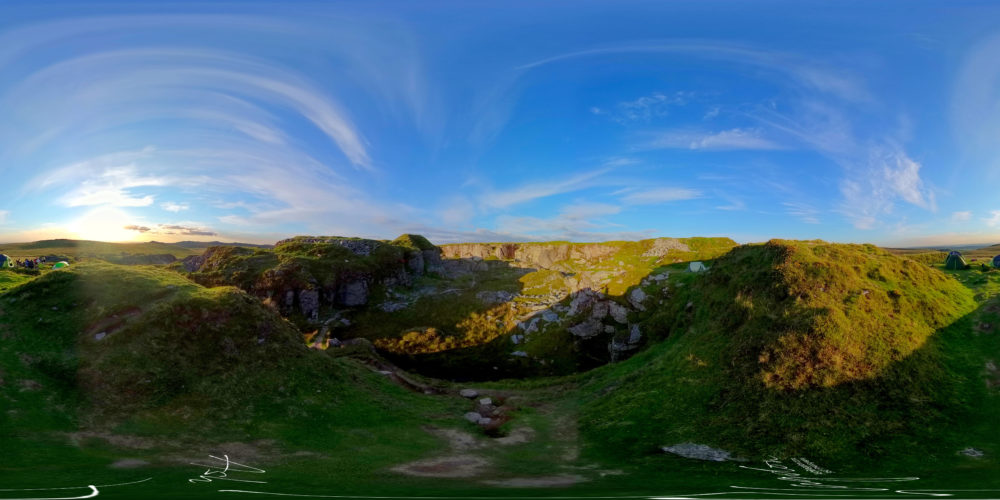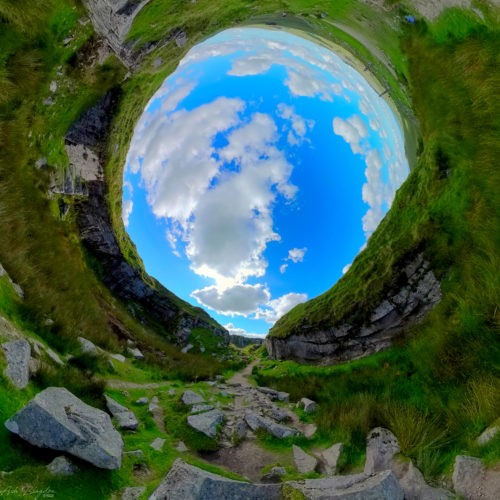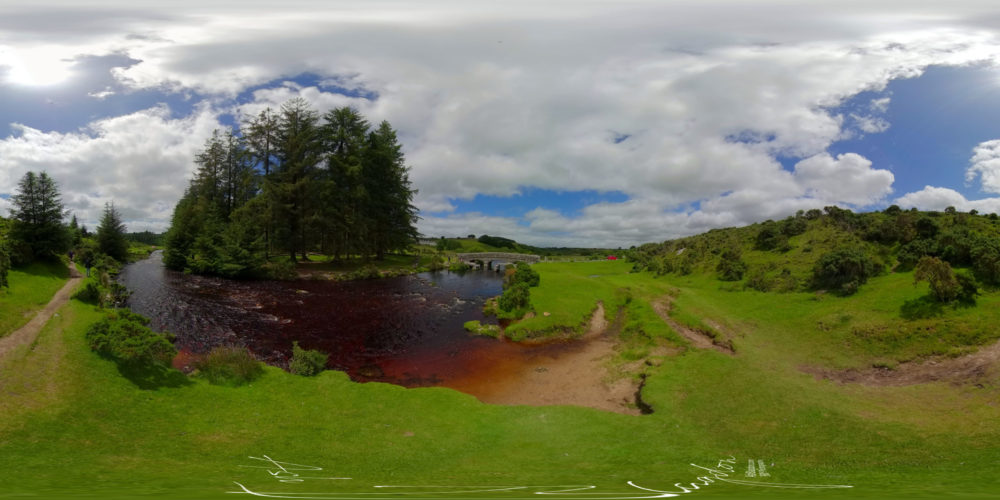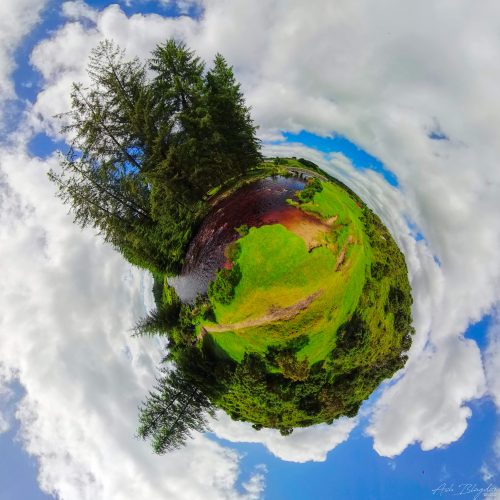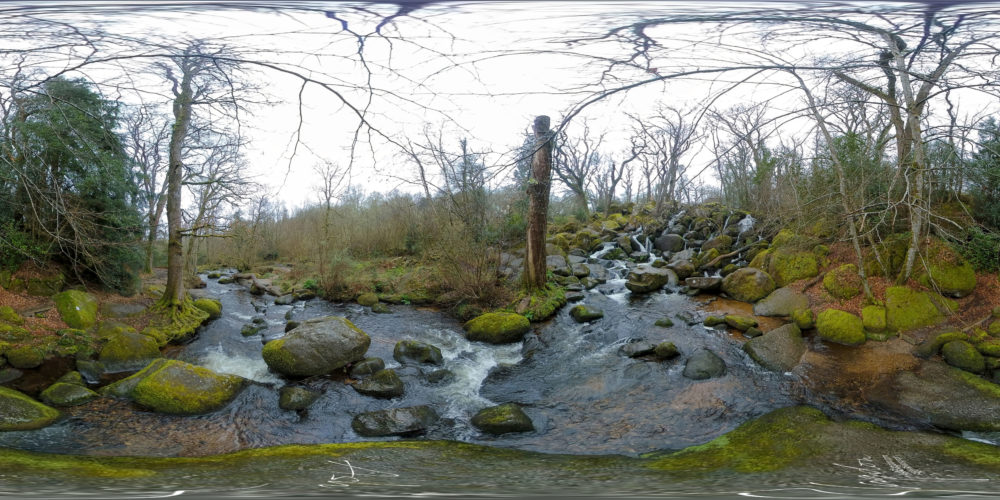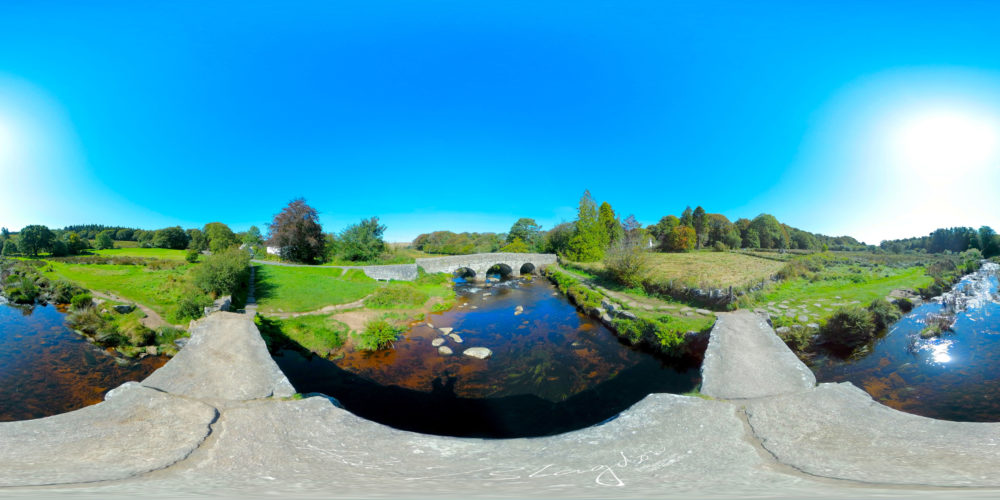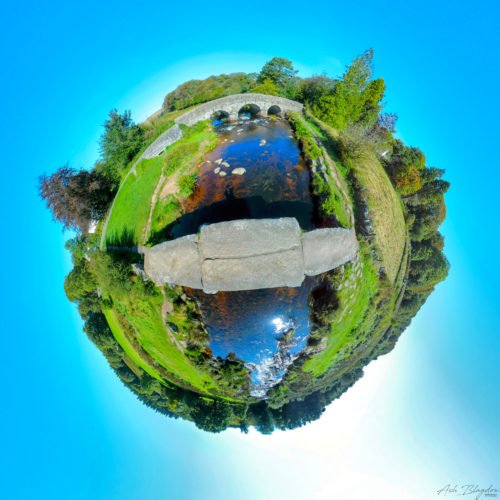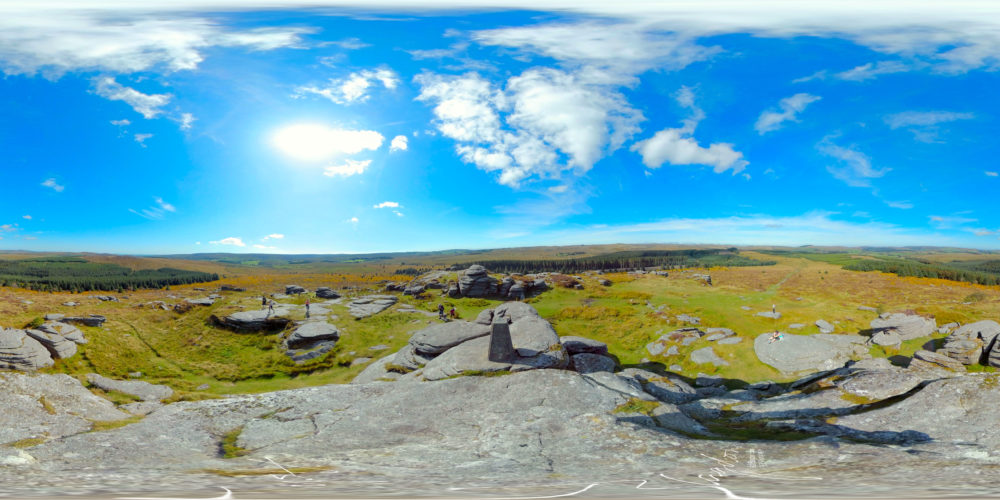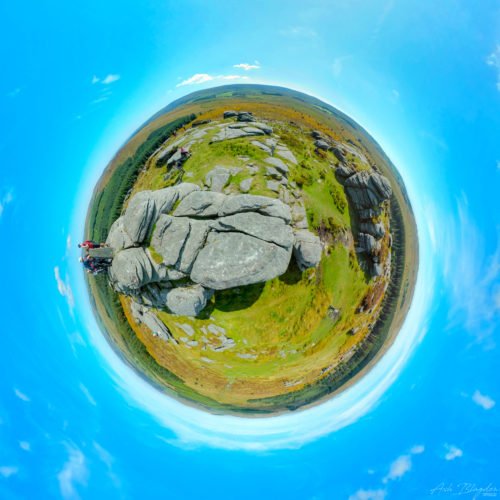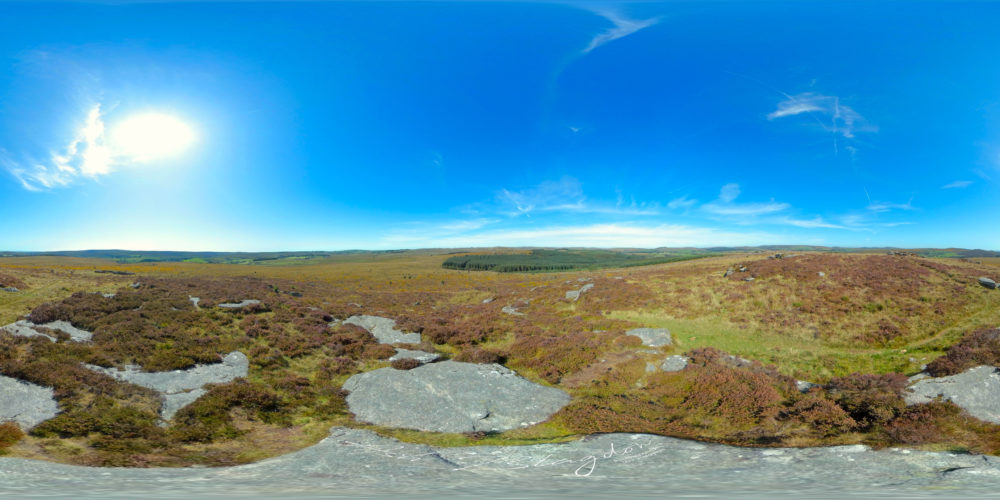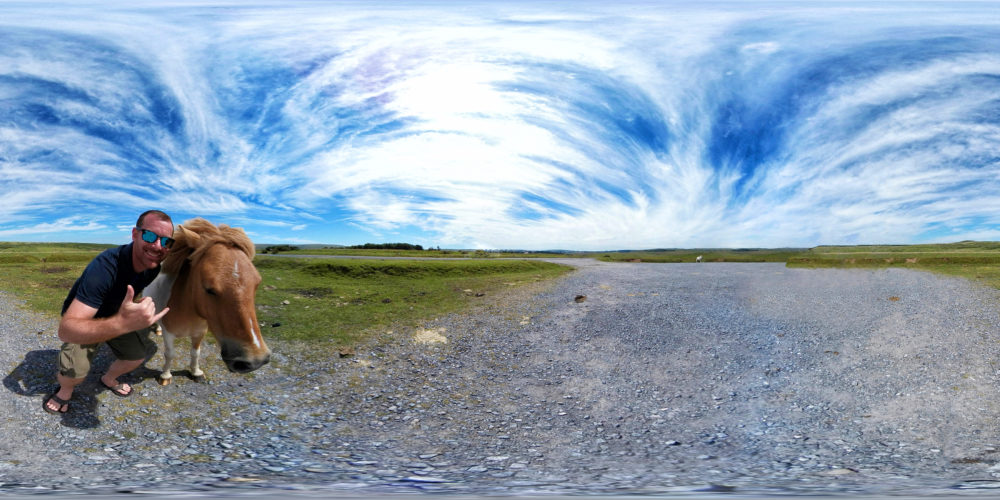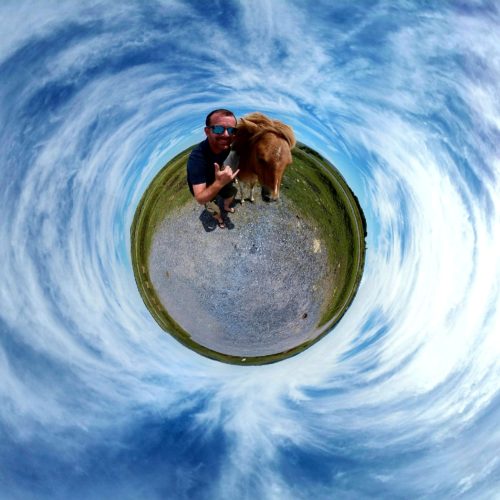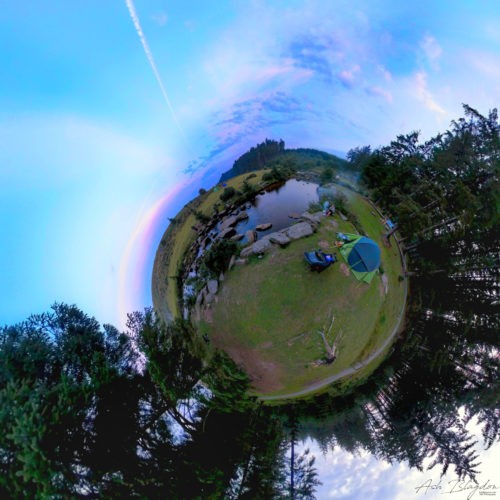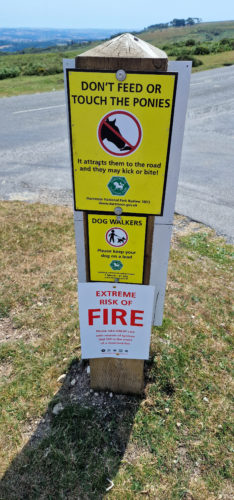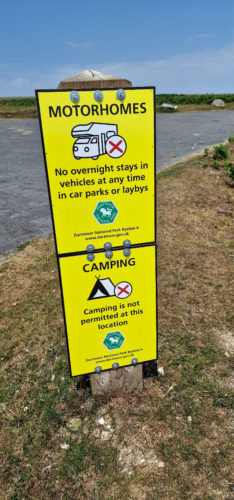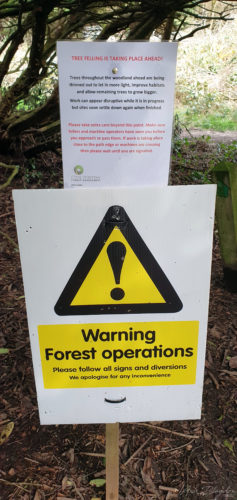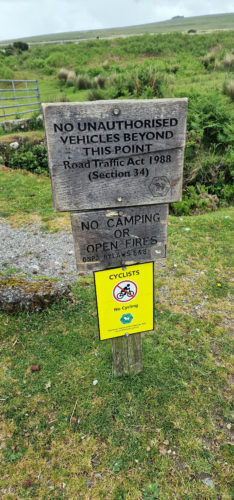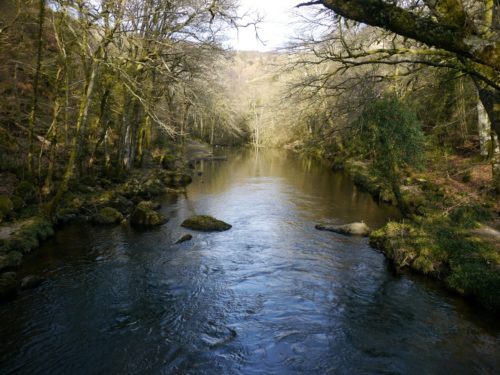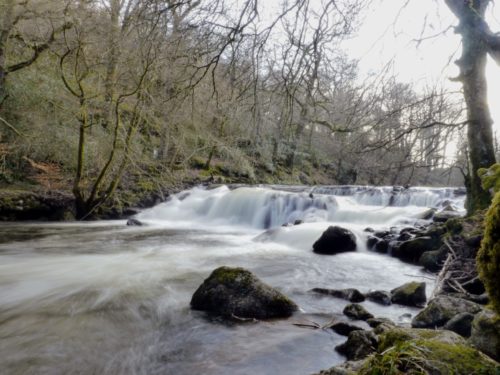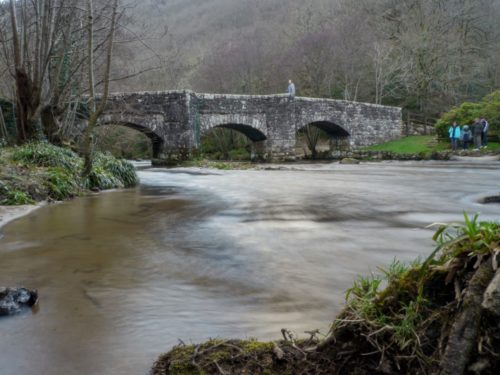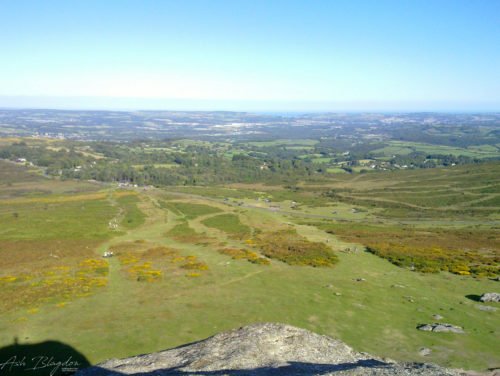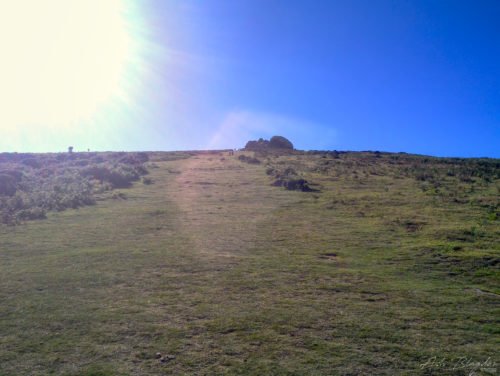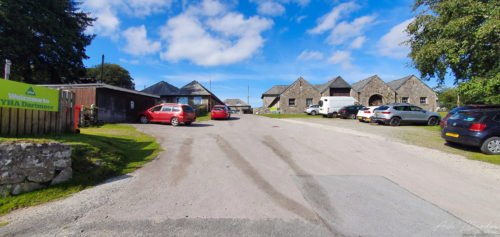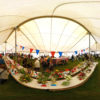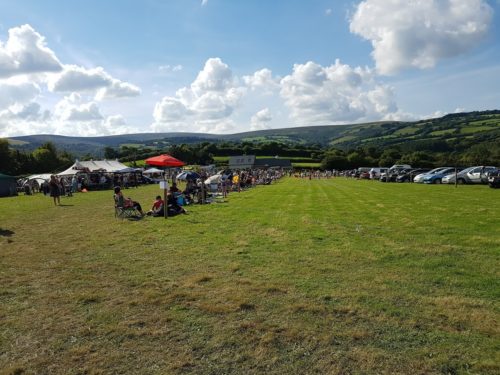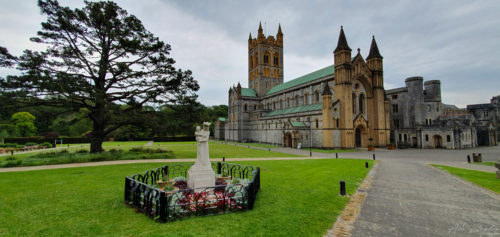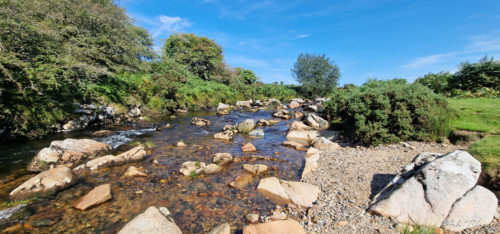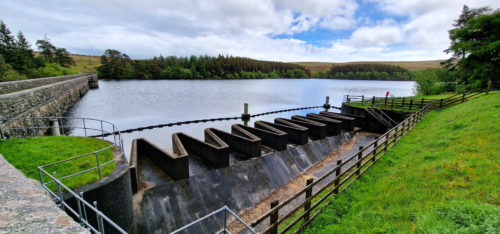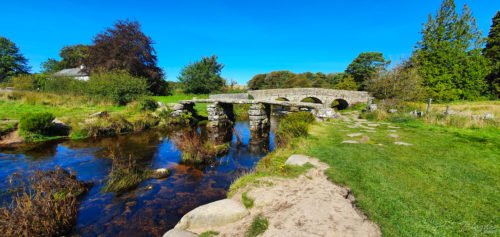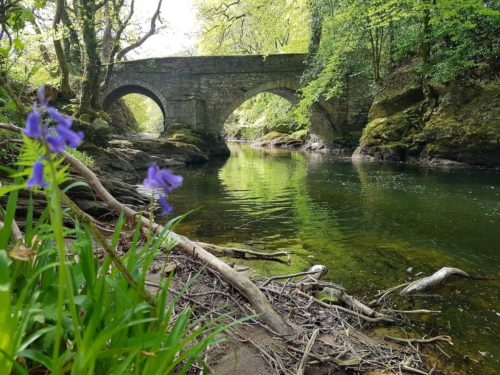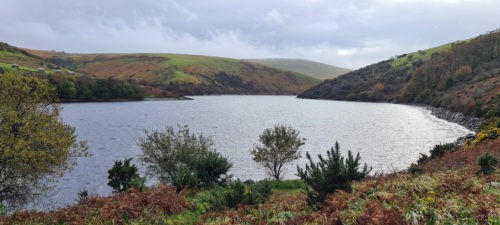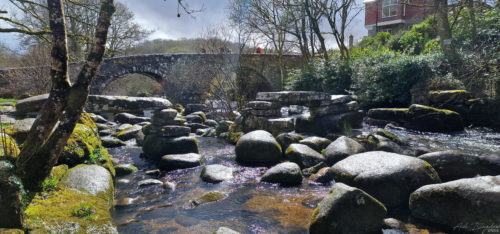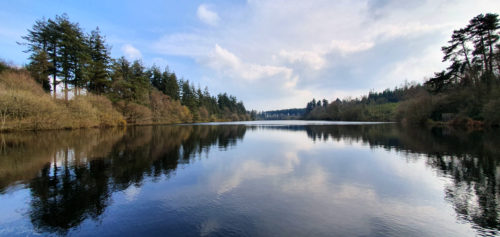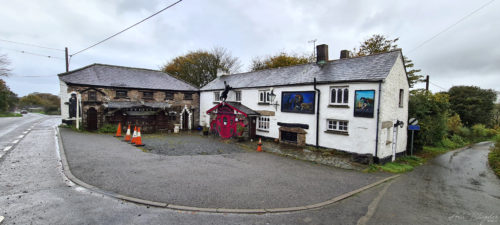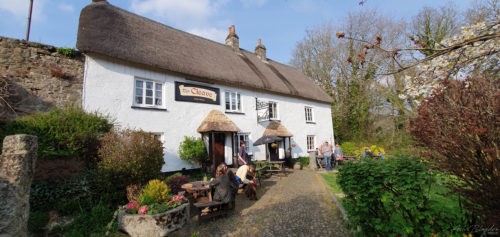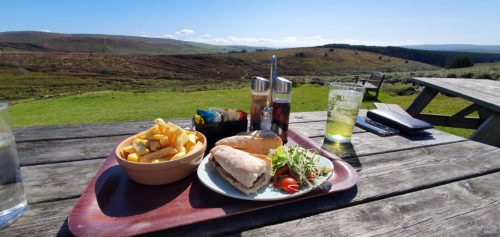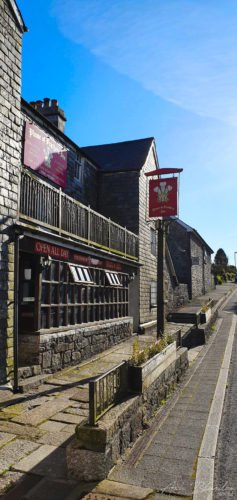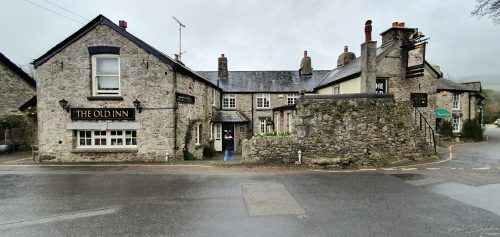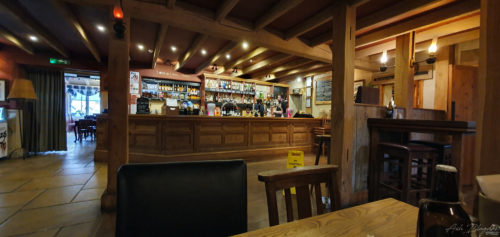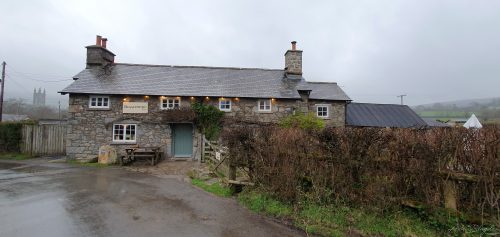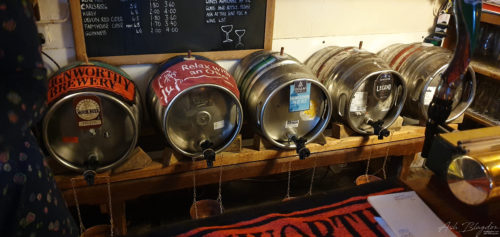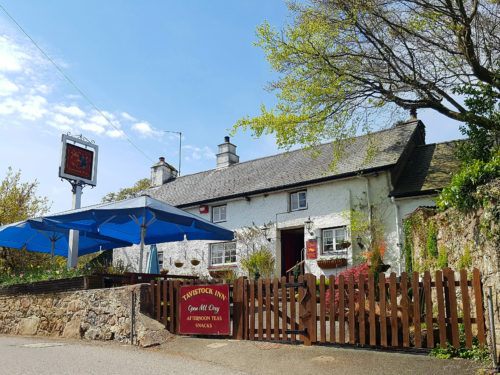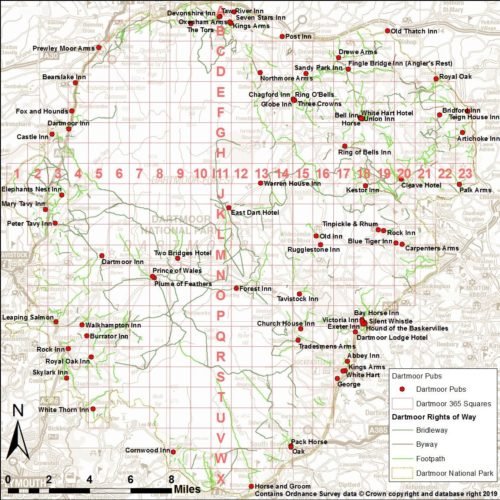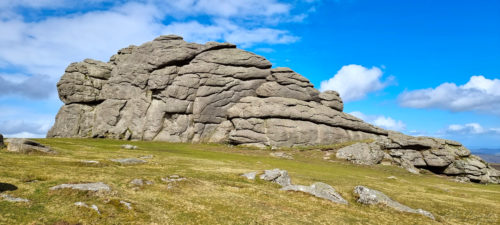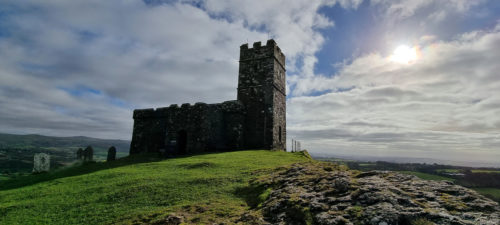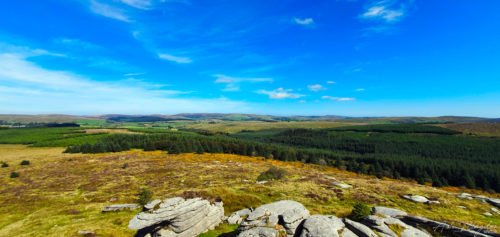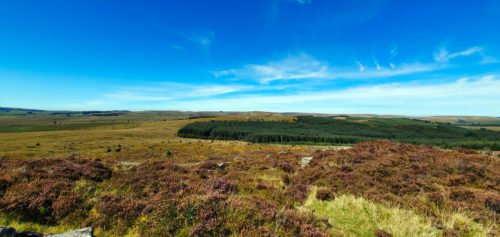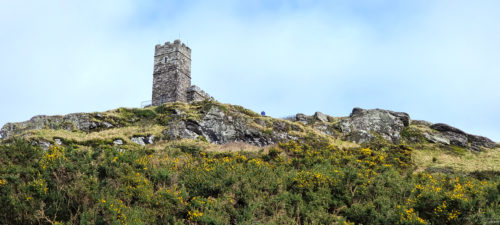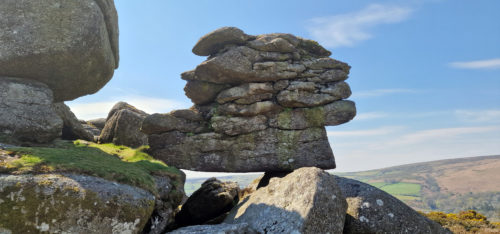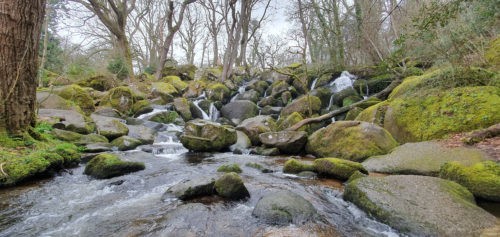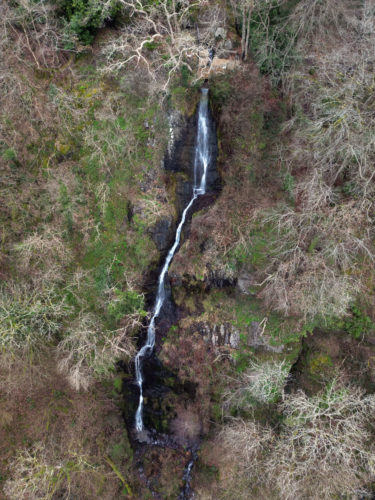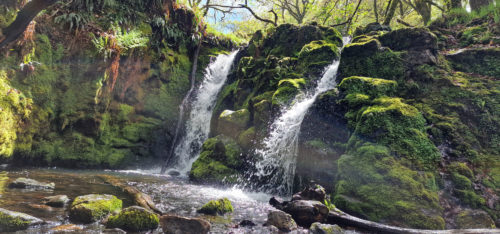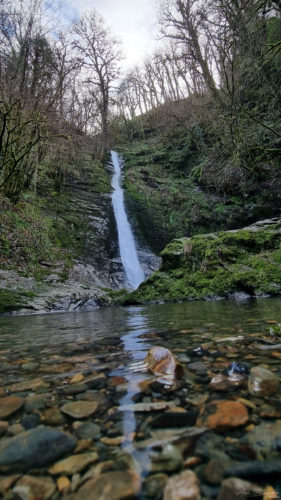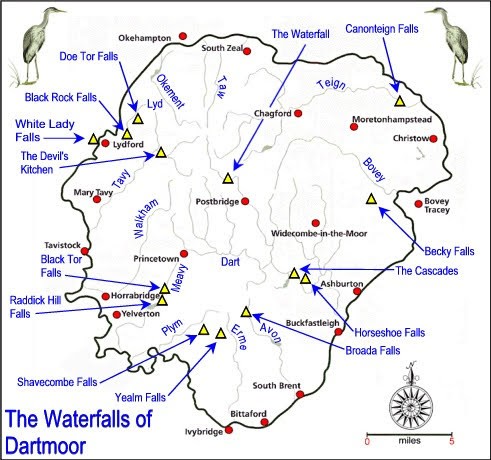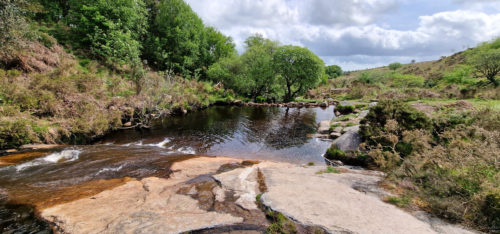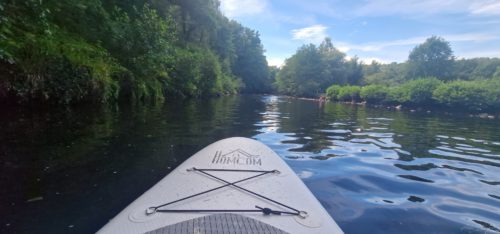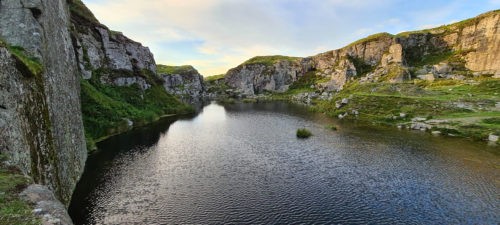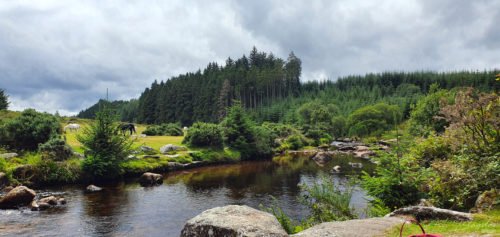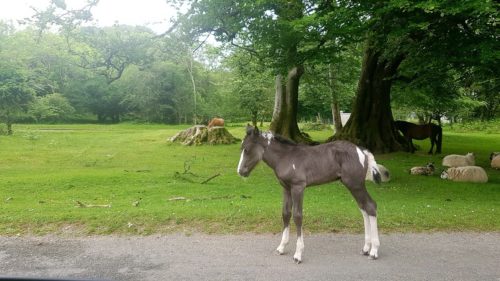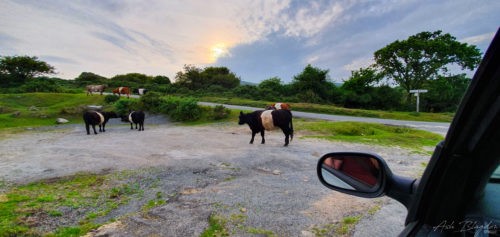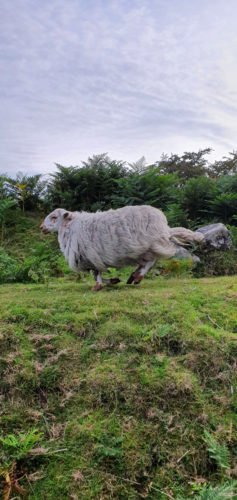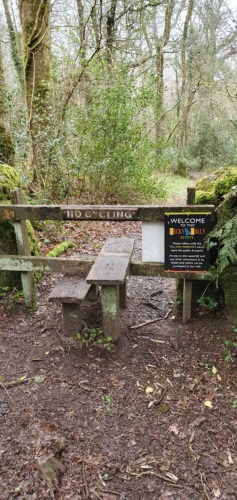Enjoy a virtual tour of Dartmoor an ancient unspoilt landscape of awe inspiring views, granite tors, deep wooded valleys with fast flowing rivers, and rugged wide open spaces in the heart of Devon. You won’t go far before you come across an Iconic Dartmoor Pony or some sheep that roam around freely.
Update: 21st August 2023
- Added: Venford Falls images.
I love the moors and never get up there anywhere near enough, there is so much to see and do, with so many Tors, waterfalls and wild swimming spots. I’ve hardly scratched the surface in all the years I’ve been going, let alone with my 360 camera in hand. I try to find the time to come up for a spot of wild camping at least a couple times a year. You can see my camping gear here. Bellever is a favourite place, though in high season it gets far too busy to enjoy during the day. I’ve listed a few places worth checking out below.
Keep Your Eyes Peeled
One of my favourite things to see is the free roaming wildlife of which there are many including ponies, cows, sheep, lizards, adders and more. Just keep your eyes peeled especially while driving as they will just suddenly step out into the road in front of you. I often pull over into a layby where there are some ponies and they tend to be very tame, they may even walked over stick their head in your car window to say hi.
Adder Basking in the Sun
You may come across an adder basking in the sun while hiking, you’ll probably hear the hissing before you actually see it. Just stand still and it should disappear into the bushes. Do not try to touch or pick it up as they are the Uk’s only venomous snake.
There are so many things to see and do all over the moors, from waterfalls, wild swimming, wild camping, pony trekking, hike tors, stone circles, rows, cists and letterboxing plus much more. The later being hundreds of small boxes purposely hidden all over the moors with only a few simple clues to help you find them and when you do, you write in and sign the book and then use the stamp in yours, if you have one with you. Letterboxing has been around for over 150 years, you can find out more here.
The National park is a stunning place no matter the weather or time of year, if you’re anywhere near make sure you stop by. If you plan on wild camping then make sure you’re familiar with the rules, individuals and small groups are allowed to camp for up to two nights in the same place without asking permission. When planning your trip, make sure you check-out the Dartmoor Wild Camping map. All wild campers must adhere to the Dartmoor Backpack Camping Code. Also check the firing range danger areas if you’re planning on being around north Dartmoor.
Dartmoor National Park is located in Devon covering 368 square miles, making it the largest and wildest area of open country in Southern UK. Over 35,000 ha (137 sq. miles) is common land. All the land in the National Park is owned by someone, even the common land.
- One of the first National Parks to be designated in the UK in 1951.
- You could fit the whole of London into Dartmoor.
- If you see any ponies, sheep or cattle in danger or distress on Dartmoor contact www.dlps.org.uk for help.
- There are three visitor centres at Dartmoor, one at Princetown, one at Haytor and one at Postbridge.
- If your in the North East be aware of the Military firing range. Warning signals, red flags by day and red lamps by night, indicate that live firing is taking place within the range boundaries, which are marked by red and white poles. Find out more here.
- There are around 1000 tors on Dartmoor. Tors are where the granite rock that is underneath Dartmoor shows through.
- High Willhays is the highest tor on Dartmoor and the highest point in southern England. Yes Tor is a modest 2 metres, a little over 6 feet lower in 2nd place.
- The lowest point on Dartmoor is Doghole Bridge. It’s 30 metres or 98 feet above sea level. (Just a simple road bridge near Trusham not much to see)
- Wistmans Wood is Devon’s oldest woodland.
- The ‘Bone Stone’ monolith is the terminal stone of the eastern stone row and said to be the largest on Dartmoor and stands 4.2 metres tall.
- The ponies on Dartmoor aren’t wild animals. They all belong to farmers. Many years ago they were used to transport things like food, wool and tin across the moor or they worked in the mines.
- The Dartmoor Pony Heritage Trust is a registered charity dedicated to the preservation of the Dartmoor pony breed. The pedigree and approved heritage Dartmoor ponies graze the moor, helping to keep the vegetation down and create diverse grassland areas for wildlife.
- Dartmoor served as the inspiration for Conan Doyle’s classic Sherlock Holmes tale The Hound of the Baskervilles and has also played a significant role in modern cinema, acting as the backdrop for the blockbusting film War Horse.
- Dartmoor has the largest number of archaeological remains in Europe.
- Logan Stones occur throughout the Dartmoor landscape as rocks which rock, log or move with effort.
- Adders are the Uk’s only venomous snake. Though seldom fatal, adder bites can have nasty effects, including swelling, drowsiness, vomiting and diarrhoea, so you should always see a doctor straight away. Adders bite hundreds of people every year, but have caused only 14 fatalities since 1876 (and none since 1975).
- There is a prison on Dartmoor. HMP Princetown opened in 1809 and is still a working prison today.
- Stalldown stone row is the longest in the world at 3.1km.
- The only place in the UK where the Bog Hoverfly exists.
- The Ash Black Slug is the largest land slug, it can exceed 20cm and is found in Dartmoor Woodland.
-
Dartmoor is home to many myths and legends and has been said to be home to pixies and fairies, as well as being haunted by a pack of ghostly hounds and a headless horseman.
The history of Dartmoor stretches back over millions of years. It’s hard to believe that this idyllic landscape was created by violent volcanoes, tropical climates and ice ages. Around 300 million years ago, the creation of Dartmoor’s famous granite rock began. Devon was once close to the equator, located on a boundary between two sections of the earth’s crust. These sections collided, causing volcanic eruptions which flowed over the land. As the magma cooled and hardened, it created the rock formations we see today. In the years that followed, the rock at the surface eroded away, exposing the granite underneath. This created the “tor” formations that can be found all over Dartmoor.
- Dartmoor has the largest number of archaeological remains in Europe. All over the moors you can find ancient settlements, stone rows and burial sites telling the stories of the people who once made this their home.
- Airbnb, from £20 a night for a private room, while entire apartments/homes can start from around £40 a night, this would be my recommended option. Get £25 off your first Airbnb trip of £55 or more click here.
- Hostel, YHA Dartmoor from £16.99 a night.
- Camping, from £6.95 per person, per night.
- Motorhome, Barley Meadow, Dartmoor Caravan Park, Woodland Springs Touring Park.
- B&B & Guest Houses, there are plenty to choose just decide if you want self catering or not from £30 to £150 a night.
- Stay at the Inn, With plenty of lovely local pubs around, its the best place to hear some stories and find out some local knowledge from £50 – £100 a night.
- Farm, from £30 – £300 a night.
- Hotel, There are few from the small family run and then the luxury hotels like the 5 star Bovey Castle and Gidleigh Park. Prices start from £40 – £350 a night.
- Wild Camping, individuals and small groups are allowed to camp for up to two nights in the same place without asking permission. When planning your trip, make sure you check-out the Dartmoor Wild Camping map. All wild campers must adhere to the Dartmoor Backpack Camping Code.
- Wildlife discovery day – Yarner (May)
- Picnic in the Park – River Dart Country Park (June)
- Dunsford Show (July)
- Lydford Fair (July)
- Dartmoor History Hunters – Postbridge (July)
- Yealmpton Agricultural Show (July)
- Yelverton Rotary Club Fun day (August)
- Okehampton Show (August)
- Manaton Show & Fair (August)
- Chagford Show (August)
- Christow Show (August)
- Meldon Wildlife Festival (August)
- Lustleigh Show (August)
- Kingsbridge Show (September)
- Widecombe Fair (September)
- Avon Dam
- Babeny (explore beautiful Dartmoor on Horseback)
- Becky Falls
- Bellever Forest
- Black-a-Tor Copse (Like its famous cousin Wistman’s Wood, also made up of the same amazing twisted Oaks but this time, without the tourists)
- Bone Stone, Drizzlecombe
- Bovey Castle
- Buckfast Abbey
- Buckland Abbey
- Buckland-in-the-Moor
- Burrator Dam
- Cadover Bridge (National Trust)
- Canonteign Forest
- Castle Drogo
- Childes tomb
- Cowsic River Weir
- Cranmere Pool letterbox (The oldest letterbox on Dartmoor)
- Dartmeet
- Dartmoor Zoo
- Denham Bridge
- Ditsworthy Warren House
- Fernworthy Reservoir
- Fernworthy Stone Circle
- Fingle Bridge
- Foggintor Quarry
- The Garden House (considered one of the finest gardens in the UK)
- Haldon Forest Park
- Haytor Quarry
- Hingston Hill Stone Circle
- Hound Tor Deserted Medieval Village
- Jay’s Grave
- Laughter Hole Stepping Stones
- Letterboxing
- Lopwell Dam
- Lydford Castle
- Lydford Gorge
- Mardon Down Stone Circle
- Meldon Aplite Quarry
- Meldon Reservoir
- Meldon Viaduct
- Merrivale Prehistoric Settlement
- The Miniature Pony Centre
- Okehampton Castle
- Old Meldon Pond (also known as Meldon Pool) Wild Swimming
- Ockerton Court
- Parke (National Trust)
- Pennywell Farm
- Pixie Hole
- Pixieland
- Postbridge Clapper Bridge
- Princetown
- River Dart Country Park
- River Tavy Weir
- Scorhill Stone Circle
- Spitchwick
- St. Michael’s Church
- Stalldown Row (The longest stone row in the world)
- Stone Lane Gardens
- Swincombe Reservoir
- Tolmen Stone
- Tottiford, Trenchford & Kennick Reservoirs
- Tors (Over 1000, I’ve listed some below)
- Venford Reservoir
- Watchet Hill Cottage,The Blackhouse (Ruins)
- Waterfalls (listed below)
- West Dart Weir
- Wheal Betsy
- Wheal Jewell Reservoir
- Wild Swimming (listed below)
- Widecombe-in-the-Moor
- Windy Post Granite Cross
- Wistman’s Wood
- Abbey Inn
- Badgers Holt
- Bearslake Inn
- The Burrator Inn
- The Cleave Inn
- The Cridford Inn (possibly the oldest inn in the UK dating back to 825AD)
- Dartmoor Inn
- The Dartmoor Inn
- Fingle Bridge Inn
- The Highwayman Inn (Britain’s most unusual pub, built 1282)
- Lewtrenchard Manor
- Old Inn (15th Century)
- The Olde Plough Inn
- The Palk Arms
- Plume of Feathers (18th Century)
- Primrose Tea Rooms
- The Rock Inn
- Rugglestone Inn
- The Skylark Inn
- Tavistock Inn
- Two Bridges Hotel
- Ullacombe Farm Cafe & Shop
- The Walkhampton Inn
- Warren House Inn (19th Century)
- The Who’d Have Thought It Inn
Here are just some of the near 1000 tors you can find on Dartmoor. The ones listed below are the more accessible, there are many more, but they are either inaccessible or on private land.
- Aish Tor
- Aller Brook Tor
- Arch Tor
- Arms Tor
- Bag Tor
- Balstone Wood Tor
- Beardown Tors
- Bell Tor
- Bellever Tor
- Belstone Common Tor
- Belstone Tor
- Bench Tor
- Berra Tor
- Birch Tor
- Bel Tor
- Black Tor (Brent Down)
- Black Tor (Butterdon)
- Black Tor (Walkhampton)
- Black-a-Tor
- Blackalder Tor
- Blakey Tor
- Bonehill Rocks
- Boulters Tor
- Bovey Rock
- Bowda Tor
- Bowerman’s Nose
- Branscombe’s Loaf
- Braddon Tor
- Brat Tor (Instantly recognisable thanks to the granite statue known as Widgery Cross at the very peak erected by William Widgery to commemorate the Golden Jubilee of Queen Victoria in 1887)
- Brent Fore Hill
- Brent Hill Tor
- Brent Tor
- Broad Amicombe Hole
- Broada Stones
- Broadall Rocks
- Broadun Rocks
- Broken Tor
- Broomage Tor
- Buckland Beacon
- Buttern Rocks
- Calveslake Tor
- Carrington Rock, Dewerstone Hill
- Chat Tor
- Chinkwell Tor
- Claig Tor
- Clay Tor (Crossing)
- Clay Tor (Hemery)
- Cleave Tor
- Click Tor
- Collard Tor
- Combshead Tor
- Coombe Down Tor
- Combestone Tor
- Conies Down Tor
- Corn Ridge Logan Stone
- Corn Tor
- Corndon Tor
- Cossick Tor
- Cowsic Tor
- Cox Tor
- Cracker Stone
- Cramber Tor
- Creber’s Rock
- Cripdon Down Tor
- Criptor
- Crockern Tor
- Crow Tor
- Crownhill Tor
- Cuckoo Rock
- Devil’s Tor
- The Dewerstone
- Dinger Tor
- Doccombe Rock
- Doe Tor
- Down Ridge Slab
- Down Tor
- Durance Rocks
- Easdon Tor
- East Tor
- East Mill Tor
- Elsford Rock
- Emsworthy Rocks
- Feather Tor
- Figgie Daniel
- Fishlake Rocks
- Fitches’ Holt
- Flat Tor
- Ford Rocks
- Fordsland Ledge
- Fox Tor
- Foxworthy Tor
- Fur Tor
- Furze Tor
- Ger Tor
- Giants’ Marble, The
- Gidleigh Tor
- Gibby Combe Tor
- Goat Rock
- Grea Tor
- Great Combe Tor
- Great Kneeset
- Great Links Tor
- Great Mis Tor
- Great Staple Tor (One of Dartmoor’s more ‘poster’ tors known for its unique and instantly recognisable ‘steeples’ made up of layered granite.)
- Great Stennent Tor
- Great Trowlesworthy Tor
- Green Combe Rocks
- Green Tor
- Greena Ball Rocks
- Gren Tor
- Ground Tor
- Gutter Tor
- Hameldown Tor
- Hangershell Rock
- Hanging Stone
- Hare Tor
- Hart Tor (Okehampton Common)
- Harter Tor
- Hartland Tor
- Harton Chest
- Hawks’ Tor
- Hawthorn Rock
- Haytor Rocks
- Heckwood Tor
- Hedge Down Tor
- Heltor Rock
- Hen Tor
- Henroost, The
- Herne Hole Tor
- Hexton Tor
- High Willhays Tor (highest point)
- Higher Harter Tor
- Higher Swincombe Rocks
- Higher Tor
- Higher White Tor
- Hingston Hill Tor
- Hollow Tor (Rundlestone)
- Hollow Tor (Widecombe)
- Holwell Rocks
- Holwell Tor
- Homerton Hill Rocks
- Honeybag Tor
- Hookney Tor
- Hound Tor
- Hound Tor Rocks
- Huccaby Tor
- Hucken Tor
- Hunt Tor
- Hunter’s Tor
- Hunter’s Tor (Lustleigh)
- Ingra Tor
- Ivy Tor
- Kes Tor Rocks
- King Tor
- King´s Tor
- Kitty Tor
- Knack
- Knattaborough Tor
- Ladybrook Tor (Ottery Tor)
- Langdon Rocks
- Laughter Tor
- Leather Tor
- Leedon Tor
- Legis Tor
- Leigh Tor
- Limsboro
- Lints Tor
- Littaford Tor
- Little Tor
- Little Bee Tor
- Little Boulters Tor
- Little Hill
- Little King’s Tor
- Little Kneeset
- Little Links Tor
- Little Mis Tor
- Little Trowlesworthy Tor
- Little Vag Tor
- Longford Tor
- Longtimber Tor
- Lower Harter Tor
- Lower Cherry Brook Tor
- Lower Tor
- Lowery Tor
- Lower Top Tor
- Lower White Tor
- Luckey Tor
- Lutton Tor
- Luxton Tor
- Lydford Tor
- Lynch Tor
- Maiden Tor
- Manaton Rocks
- Mardon Down Rocks
- Master Rock, The
- Mel Tor
- Meldon Hill Tor
- Middle Staple Tor
- Middle Tor
- Milfordleigh Rocks
- Nameless Tor
- Narrow Tor
- Nat tor
- Nattadon Tor
- North Hessary Tor
- Nutcracker
- Oke Tor
- Old Hill Rocks
- Owlacombe Burrow Rock
- Oxen Tor
- Peek Hill Tor
- Penn Beacon
- Pepperdon Down
- Pepperdon Rocks
- Pepperdon Rocks North
- Pew Tor
- Pil Tor
- Pin Tor
- Pinchaford Ball Tor
- Pupers Rock
- Rabbits Tor
- Raven’s Tor (Lustleigh)
- Rippon Tor
- Rival Tor
- Rook Tor
- Roos Tor
- Rose Cottage Rocks
- Rough Tor
- Round Hill Tor
- Royal Tor
- Rowtor
- Rundlestone Tor
- Saddle Tor
- Scarcy Tor
- Scorhill Tor
- Set Tor
- Shadyback Tor
- Shapley Tor
- Sharpitor
- Sharp Tor (Castle Drogo)
- Sharp Tor (Harford Moor)
- Sharp Tor (Lydford)
- Sharp Tor (Peter Tavy)
- Sharp Tor (Tavy Cleave)
- Sharp Tor (Yartor Down)
- Shaugh Beacon
- Shavercombe Tor
- Sheeps Tor
- Shell Top Tor
- Shelstone Tor
- Shilstone Tor
- Shipley Tor
- Shillyrock
- Sittaford Tor
- Smallacombe Rock
- Smeardon Down Tors
- Smith Hill Tor
- Sourton Tors
- South Devil’s Tor
- South Hessary Tor
- Spinsters’ Rock
- Stacombe Tor
- Standon Hill
- Stannon Tor
- Stalldown Clitter
- Stalldown Tor
- Steeperton Nose
- Steeperton Tor
- Steng-a-Tor
- Strane Tor
- Swell Tor
- Tavy Cleave North Tor
- Tavy Cleave South Tor
- Thirlstone, The
- Thornworthy Tor
- Three Barrows Tor
- Top Tor
- Tor Rocks
- Tors End Tor
- Tristis Rock
- Tunnaford Rocks
- Twizzle Tree Tor
- Ugborough Beacon
- Underhill Tor
- Vag Hill Tor
- Vixen Tor
- Wacka Tor
- Walrus Stone, The
- Watern Tor
- Wedlake Tor
- Western Beacon
- Welstor Rock East
- Welstor Rock West
- West Mill Tor
- Whitehill Tor
- Wicketts Ground Rocks
- Winney’s Down Logan Stone
- Winter Tor
- White Tor
- White Ridge Tor
- Wild Tor
- Wind Tor
- Wittaburrow
- Wollake Tor
- Woodcock Tor
- Yar Tor
- Yealm Rocks
- Yelverton Rock
- Yes Tor
- Avon Waterfall
- Becky Falls
- Black Rock Falls
- Black Tor falls
- Broad Falls
- Burrator Reservoir Waterfall
- Canonteign Falls
- Doe Tor Falls
- East Dart Waterfall
- Green Combe Waterfall
- Holne Wood Waterfall
- Horseshoe Falls
- Raddick Hill Waterfall (Man made)
- Kitt’s Steps (Private land)
- Shavercombe Falls
- Tavy Cleave Waterfall
- Venford Waterfall
- Whitelady Waterfall
- The Waterfall
- Yealm Waterfall
All these spots are wild and have no safety measures in place. Know your own limits. Expect the water to be cold and go in slow if you’re not used to cold water swimming. Have an escape plan and know your escape route in case you get in to trouble. Know that pockets of very cold water can appear from nowhere, especially in abandoned quarries. Quarry swimming comes with more risk as you can never be sure what’s in the water underneath you (in terms of old machinery etc). Don’t swim if water has become discoloured, as this can indicate flooding and can present dangerous currents. Don’t ever swim alone! Always swim with someone, even if they’re not in the water and on land.
- Bellever
- Cadover Bridge
- Cramber Pool
- Crazy Well Pool
- Cullever Steps Pool
- Foggintor Quarry
- Haytor Quarry
- Hexworthy Bridge
- Sharrah Pool
- Shilley Pool
- Tavy Cleave Pool
- Trowlesworthy
- Tuckers Pool
- Witch’s Pool
The moors are a natural environment so expect it to be rugged and boggy in places. There are some areas with man made walkways allowing disabled chairs, but mostly you will have to walk, ramble and hike everywhere. Many field crossings there are stiles you’ll have to climb over.
- Bus, Haytor Hoppa a circular service that covers the eastern side of Dartmoor. Prices adult £5, senior £4.00, child (5-15 years) £2, family £10 (up to 2 adults and 3 children)
- Car, is by far the easiest option just remember the 40mph speed limit, this is to protect the cattle, sheep and ponies who freely roam the moor and can wander onto the roads at any time. Check out Rhino Car Hire
- Cycling keep the moor car free and yourself fit, check out the Dartmoor Way for routes.
- Taxi, Mooreland Taxis 01626 835095.
- Motorhome, Some of the roads around Dartmoor are quite narrow, have width and length restrictions so check where your going.
- Walking/hiking, With so many routes available across the landscape, you can enjoy a variety of walks at all different times of the year. Follow a suggested route or join a guided walk.
Tip: Remember Dartmoor has a 40mph speed limit to protect the cattle, sheep and ponies who freely roam the moor and can wander onto the roads at any time.
Tip: Only park in the car parks or keep your vehicle within 15m of the highway. If not you will be asked to move by a park ranger or a note left on your windscreen.
- If you see any ponies, sheep or cattle in danger or distress on Dartmoor contact www.dlps.org.uk for help.
- Sadly due to some individuals with no respect for the moors, there was an increase in fly-tipping and excessive rubbish being left in the Summer 2020. This meant that there was a temporary ban on camping at Bellever for 27 days. LEAVE IT HOW YOU FIND IT AND LEAVE NO TRACE!
- Do not rely entirely on your phone or a GPS unit, as signal isn’t always available.
- Remember Dartmoor has a 40mph speed limit to protect the cattle, sheep and ponies who freely roam the moor and can wander onto the roads at any time.
- Only park in the car parks or keep your vehicle within 15m of the highway. If not you will be asked to move by a park ranger or a note left on your windscreen.
- Camping, individuals and small groups are allowed to camp for up to two nights in the same place without asking permission. When planning your trip, make sure you check-out the Dartmoor Wild Camping map. All wild campers must adhere to the Dartmoor Backpack Camping Code.
- You can see all my camping gear here.
- Wild Swimming, don’t swim if water has become discoloured, as this can indicate flooding and can present dangerous currents.
- Swimming in abandoned quarries come with greater risk as you can’t be sure what’s in the water (in terms of old machinery etc).
- Don’t ever swim alone! Always swim with someone, even if they’re not in the water and on land.
- It is important to keep all gates shut in order to prevent cross-breeding with ponies from the surrounding area. Please do not feed the ponies.
- The ponies on Dartmoor aren’t wild animals. They all belong to farmers. Many years ago they were used to transport things like food, wool and tin across the moor or they worked in the mines.
- The Dartmoor Pony Heritage Trust is a registered charity dedicated to the preservation of the Dartmoor pony breed. The pedigree and approved heritage Dartmoor ponies graze the moor, helping to keep the vegetation down and create diverse grassland areas for wildlife.
- Beware of adders, the UK’s only venomous snake. Though seldom fatal, adder bites can have nasty effects, including swelling, drowsiness, vomiting and diarrhoea, so you should always see a doctor straight away. Adders bite hundreds of people every year, but have caused only 14 fatalities since 1876 (and none since 1975).
- Check the firing range danger areas if walking on north Dartmoor.
- Leave no trace, take your rubbish home.
- Don’t light fires or BBQ’s directly on the grass, always use a rock or a camping stove/BBQ with legs so not to damage the ground.
- Wear walking boots, not trainers as they don’t support your ankle and may cause you to slip.
- If the weather deteriorates do not hesitate to turn back.
- Dogs must be kept on a lead in the presence of grazing animals.
| Mon | Tue | Wed | Thu | Fri | Sat |
| +13° | +12° | +11° | +13° | +15° | +13° |
| +9° | +8° | +8° | +7° | +10° | +9° |
If you found this helpful, please like and follow my social pages
Click here to Explore More of the UK in 360º
Originally posted on 17 Jul 2017 @ 20:58
